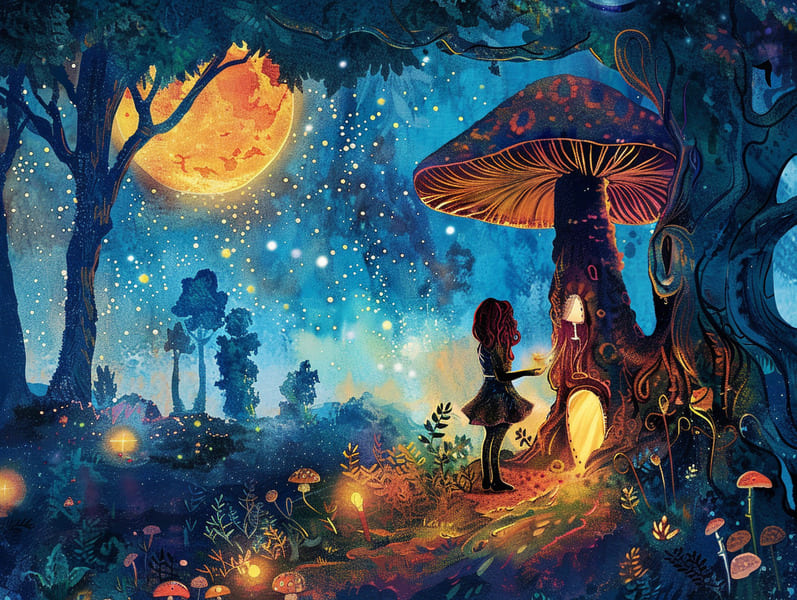The Emergence of Children's Fairy Tales and the Timeless Grace.
The Emergence of Children's Fairy Tales and the Timeless Grace.
Blog Article

Popular fairy tales have long histories. These stories have been shared from one generation to the next centuries before they were ever recorded. They developed from a variety of societies, including Middle Eastern traditions. They were initially conveyed among adults, often carrying themes and messages concerning the societal norms and beliefs of the time.
Jacob and Wilhelm Grimm, the two Grimm brothers, were among the first to assemble many of these beloved fairy tales. Their compilation, "Grimm's Story Collection," included stories like "Ashenputtel," "The Bread Crumb Trail," and "Schneewittchen," which have since become cornerstones in the world of timeless fairy tales. Similarly, the Danish author's fanciful tales, such as "The Story of the Little Mermaid," and "The Little Duckling," have captured hearts worldwide, guaranteeing their place in the pantheon of treasured fairy tales.
Despite their ancient origins, fairy tales remain as relevant as ever, especially as bedtime stories for kids. These enchanting tales are now available in different formats, including gorgeously illustrated books, delightful animations, and digital storybooks.
Their enduring popularity can be ascribed to several captivating elements:
Important Morals: Old fairy tales often teach important moral lessons. Fairy tales like "The Shepherd Boy and the Wolf" teach the value of honesty, while "The Tale of the Tortoise and the Hare" emphasize the merits of persistence and humility. These tales offer young readers clear distinctions between moral and immoral, helping to shape their moral compass in a soft yet lasting way.
Sympathy and Perception: Timeless fairy tales frequently include heroines facing struggles and tests, inspiring readers to relate with their struggles and boost their triumphs. For instance, "Beauty and Her Beast" highlights the value of seeing beyond the surface to appreciate the inner core of a soul, encouraging empathy and comprehension.
Cultural Knowledge: Many fairy tales are deeply embedded in the cultural contexts from which they sprang. Understanding these stories can provide illuminating insights into different ways of life, fostering a sense of cultural appreciation and acknowledgment.
Inventiveness and Imagination: The enchanted elements in ancient fairy tales—magical beings—invigorate children’s dreaming abilities. These stories lead readers to extraordinary realms, boosting innovative ideas and here a sense of enchantment that stays a lifetime.
Classic fairy tales are not only alluring but also informative. They work as captivating tools in advancing various cognitive and affective skills in young ones. When classic fairy tales are recited, they develop linguistic abilities by showing new language items and complicated sentence structures. This practice also nurtures hearing abilities and mindfulness, as young readers follow the story, excited to see what happens next.
Furthermore, talking about the themes and characters of classic fairy tales can develop problem-solving abilities and analytical skills. Young ones are led to find patterns, expect results, and understand cause and effect. These examinations also help children say their thoughts and feelings, boosting their emotional intelligence.
In today’s modern era, the accessibility of internet fairy tales has made these fairy tales more attainable than ever. Websites and web apps feature ample collections of old fairy tales that can be browsed or played anytime, anywhere. Fairy tales spoken are particularly popular, supplying an fun way for kids to appreciate these enchanting tales. Spoken stories and read-out-loud stories transport characters and settings to life, often complemented by fantastical background sounds and music that amplify the tale journey.
The everlasting appeal of ancient fairy tales lies in their ability to modify to modern days while keeping their central messages. Contemporary reimaginings of these narratives often highlight more varied protagonists and modern settings, making them accessible to today’s audience. However, the core values of heroism, charity, and justice remain unchanged, continuing to move young listeners of all ages.
Fairy tales also offer a sense of solace and predictability. They confer upon a structured narrative with a evident beginning, middle, and end, often ending with the solving of conflicts and the triumph of truth over falsehood. This constancy can be easing for young ones, furnishing a sense of invariability in an variable world.
Old fairy tales continue to spellbind and educate new generations, maintaining their appeal and value in modern society. As nighttime stories for kids, they furnish a perfect blend of charm and understanding, aiding moral values, empathy, and creativity. The availability of digital fairy tales and the likability of fairy tales spoken confirm that these traditional tales remain within reach to new generations.
By defending and circulating these tales, we continue to pay tribute to the rich tapestry of mythology and cultural heritage. Whether you are delving into a colorful picture book, viewing a web-based collection, or playing an spoken story, the mystique of ancient fairy tales is always within reach. These stories convey of the perpetual influence of storytelling and its ability to tie us across centuries and lands.
No matter if you are browsing a richly illustrated book, seeing a digital collection, or playing an audio story, the spell of old fairy tales is always within reach.
These stories emphasize of the consistent strength of fairy tales and its ability to bond us across eras and regions, making a tie that captivates and teaches alike.